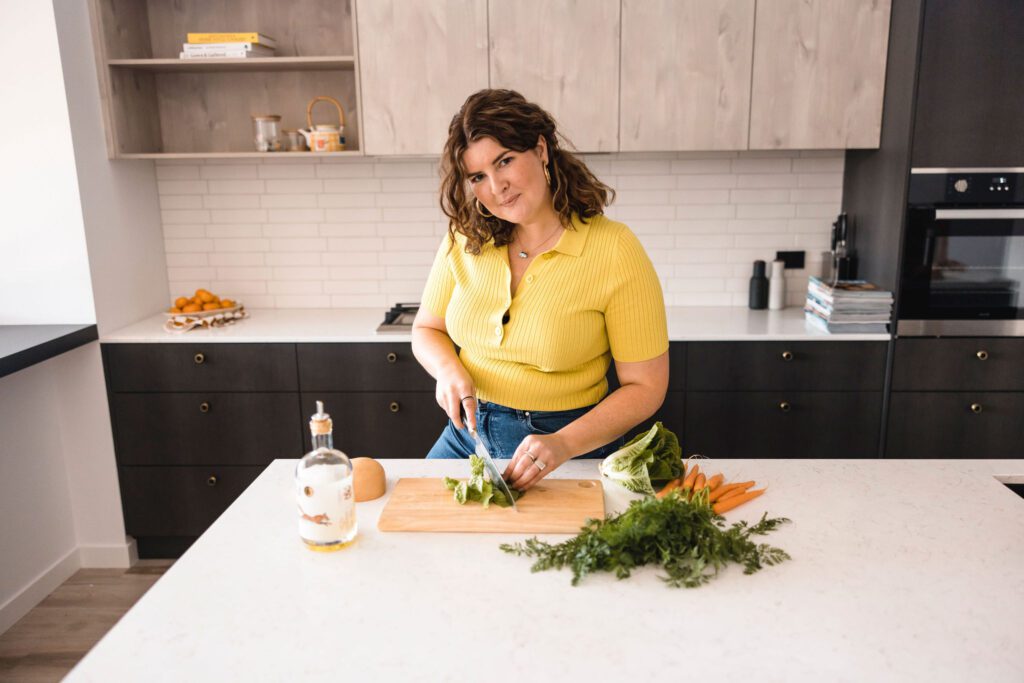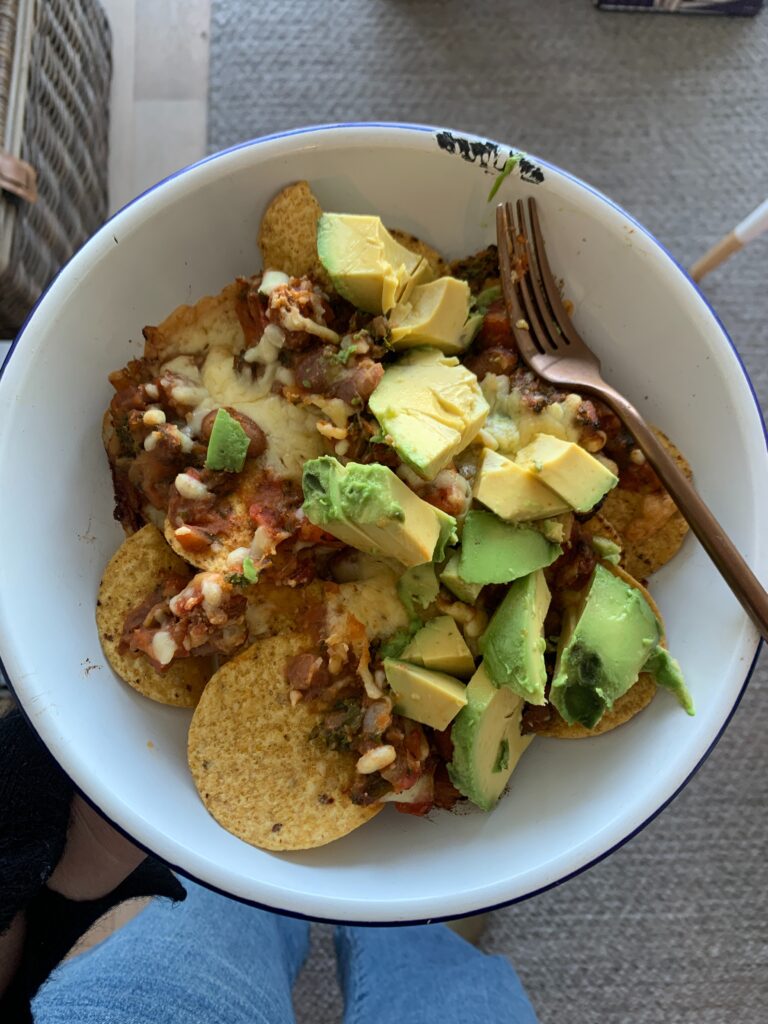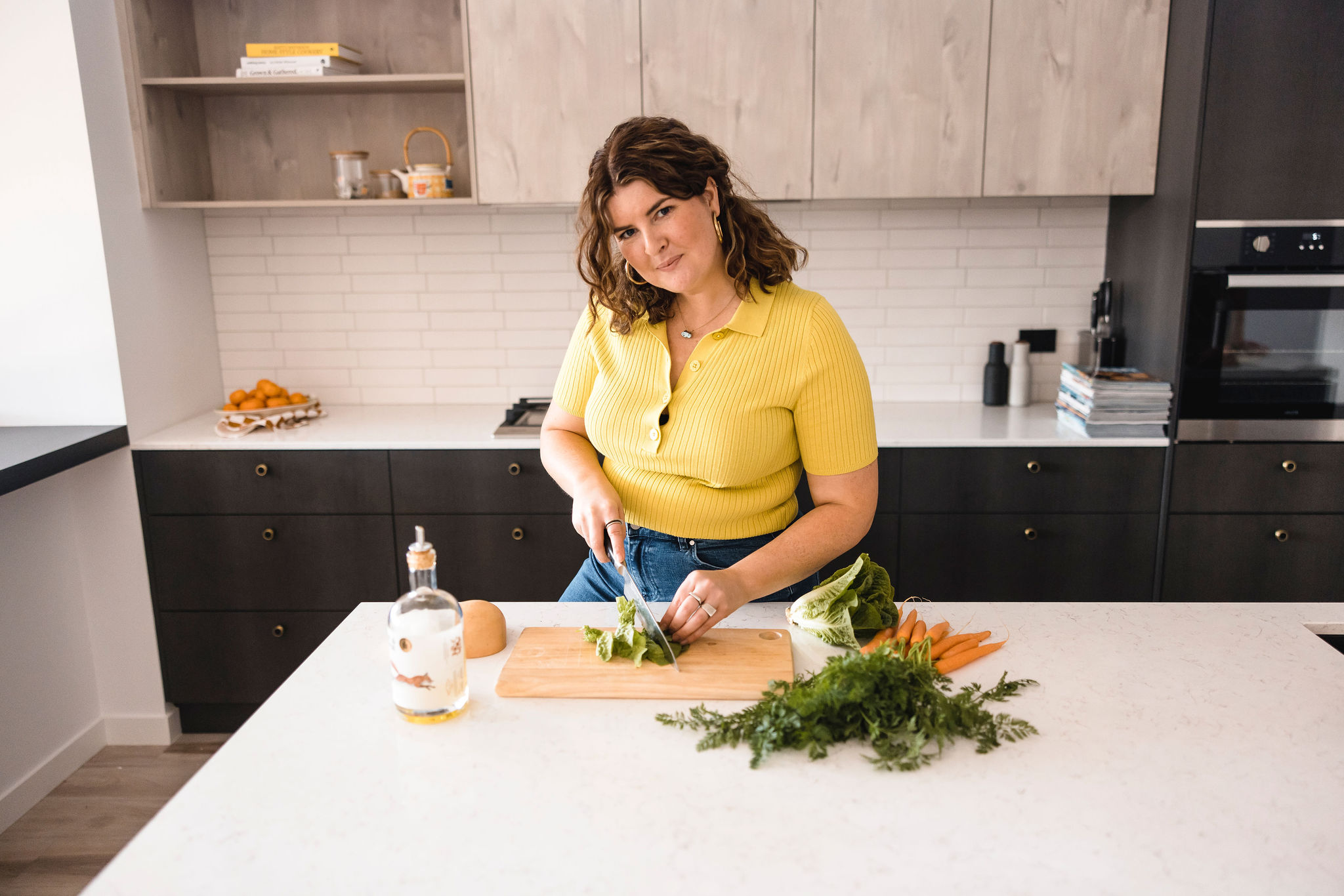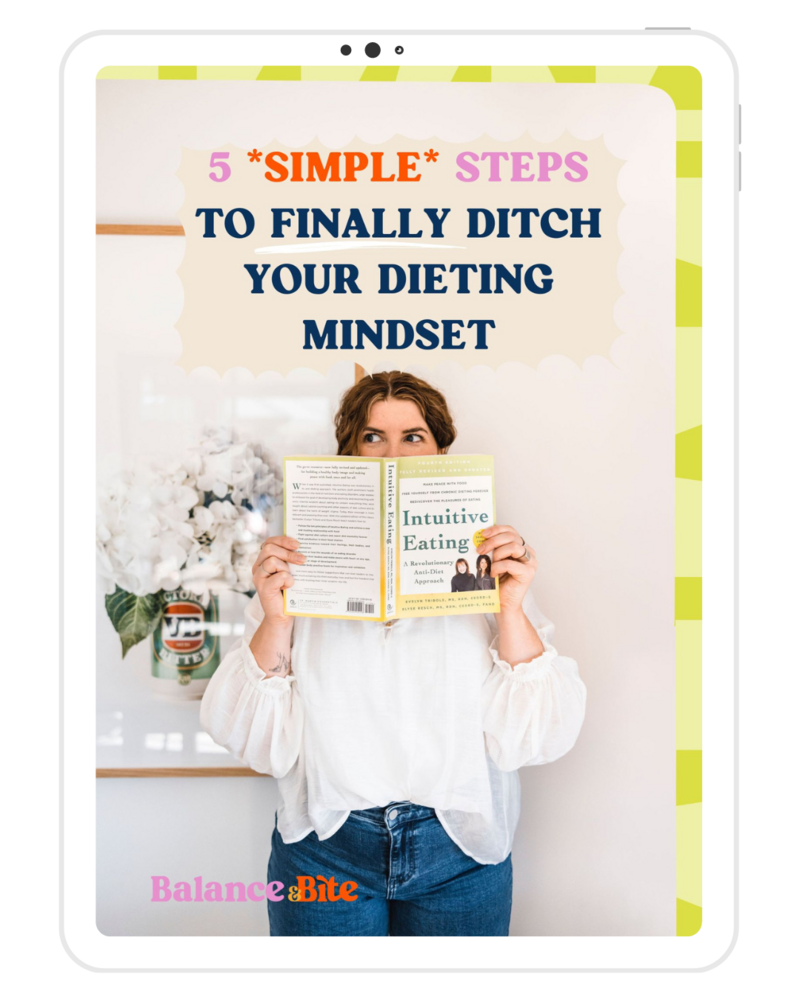Over the past thirty years, the image of a “healthy meal” has changed dramatically. While high-fat foods were considered disgusting for decades, we’re now embracing the food group, adding butter to coffee and generously covering vegetables in cheese. Carbs, on the other hand, are out, while protein remains the consistent hero of nutrition.
Safe to say, if you’re confused about how to create a healthy meal, you’re not alone. As society and so-called “health experts” on social media continue to demonise foods, our idea of health becomes more and more complex when it really doesn’t need to be.
I’m always surprised when I recommend a healthy meal idea to a client, whether it’s a sandwich, pasta or even a smoothie recipe, and they respond, “But I thought x ingredient wasn’t healthy”.
Health, or more specifically healthy eating, has become so complicated that preparing a simple healthy meal can feel impossible for many of my clients. The standards set are so unachievable and unrealistic that we’ve completely lost our bearing on what “healthy” actually means.
If you’re ready to turn down the volume on diet culture and learn how to create a healthy meal without restriction, this article is for you!


What does a healthy meal look like?
If you Google “What does a healthy meal look like?” you’ll most likely see a picture of a plate consisting of ½ vegetables, ¼ protein and ¼ carbohydrates. While it’s a great starting point for a healthy meal, it’s missing two crucial components; fat and flavour. You see, a healthy meal needs to do more than fill us up and nourish us; it has to satiate us.
Gentle nutrition, which informs the recommendations in this article, argues food can be equally nourishing and satisfying. Yes, there’s a difference between fullness and satiation. How do we achieve this? Well, we get back to basics.
Get back to basics
In fact, creating a balanced and healthy meal is as simple as combining the four main food groups; fat, protein, carbohydrate, and fibre, along with someone we often forget – flavour. Whether that’s seasonings, dressings, marinades, or dips – the taste is the secret to eating healthy food consistently. Because it doesn’t matter how much willpower you have, there are only so many bland, steamed and unseasoned vegetables a person can eat.
Five simple steps to creating a healthy meal
Step 1. Choose your carbohydrates
- Rice
- Pasta
- Bread
- Cous Cous
- Pita/wrap/tortilla
- Noodles
- Legumes
- Quinoa
- Polenta
- Oats
- Flour
- Potato/sweet potato
- Corn chips
Step 2. Protein
- Meat/Chicken/Pork
- Fish (fresh, frozen or canned)
- Eggs
- Tofu/tempeh
- Legumes
- Yoghurt
- Cheese
Step 3. Fibre (aka fruit & vege*)
- Fruit
- Vegetables
* Fresh, frozen, canned – there is no such thing as good or bad fruit/vegetables.
Step 4. Fats
- Butter
- Olive oil
- Avocado
- Nuts/Nut butter
- Cheese
- Sour Cream
Step 5. Flavour
- Soy sauce
- Mayonaise
- Mustard
- Curry pastes
- Marinades
- Pesto
- Dips
- Seasoning
- Sauce
Pulling it all together (examples of healthy meals)


Loaded Nachos
Carbs – Corn chips
Protein – Canned beans
Fat – Cheese
Flavour – Salsa
Fibre – Canned Beans/Advocado


Chickpea, halloumi & cauliflower salad
Carbs – Chickpeas
Protein – Halloumi/chickpeas
Fat – Halloumi + Olive oil
Flavour – Tumeric seasoning
Fibre – Cauliflower


Sausage casserole with rice
Carbs – Rice
Protein – Sausages/Beans
Fat – Sausages
Flavour – Baked beans
Fibre – Frozen vegetables
Important things to consider
Food isn’t linear
You might have noticed in the examples above that some foods tick more than one food group – because food is not linear. Almost every food belongs to at least two food groups, and something (like legumes) can even fit into three; carbohydrates, protein and fibre. So, in other words, start adding legumes to your meals if you notice you’re missing these three nutrients.
Not every meal needs to be perfectly balanced
Unless you have a personal chef or endless time and money to source and prepare each meal, it’s unrealistic to expect every meal to be perfectly balanced and healthy. It’s also incredibly unlikely you’ll feel like every food group at a meal. The goal is, for the most part, thinking; to follow this balanced approach for at least 2 of your main meals 4-5 days a week. Sometimes breakfast calls for butter and vegemite on toast, or after a long day, you feel like a big bowl of creamy pasta. Including your favourite meals regularly, although they may not be super nutrient-dense, is part of being healthy – because health encompasses more than our physical well-being – social and emotional health is just (if not more) important.
Feeling overwhelmed with this much flexibility?
If reading these loose guidelines to prepare a healthy meal has your heart racing in anticipation of breaking your ridgid health goals, it might be time to work through them with a professional.
It can seem almost sacrilegious to consider adopting a flexible approach to cooking with a society that celebrates micromanaging our food intake.
But if this is showing up for you, I invite you to ask yourself if this narrow idea of health is actually helping you. Remember, you shouldn’t feel guilty about adding fats, seasonings, dressings and flavour to your meals.
Like I said at the start of this article, healthy eating doesn’t have to be complicated. If you’re ready to feel in control around food again and make looking after yourself easy, fun and enjoyable, get in touch to see how I can help you become an intuitive eater.


Erin’s an Accredited Practising Dietitian & Certified Intuitive Eating Counsellor. She uses a non-diet approach and weight-inclusive care to help her clients reclaim a healthy relationship with food and their bodies free of guilt, shame and restriction.










View comments
+ Leave a comment